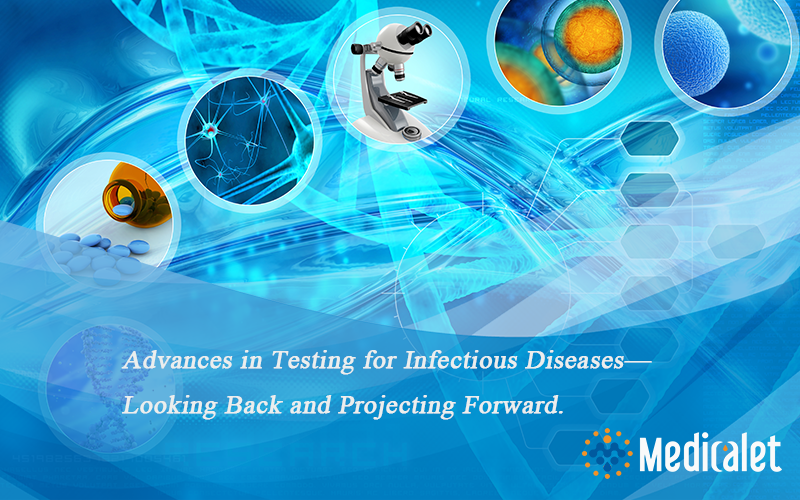
Over the past 2 and a half decades, the COVID-19 pandemic, seemingly week after week, there have been advances in testing for infectious diseases, advances that enable specific, accurate diagnoses and are improving human health.
In 1983, Kary Mullis invented the polymerase chain reaction (PCR). This development effectively divided microbial diagnostics into those originating before (e.g., culture, stains, and antigen and antibody detection) and those available after the advent of what is today better referred to as nucleic acid amplification tests (NAATs), of which PCR is one example. Beginning in the 1990s, PCR (and other NAATs) were adopted into clinical practice—amazingly quickly considering the timeline involved. Some, such as PCR for herpes simplex virus-1 performed on cerebrospinal fluid (CSF), made possible diagnosis of life-threatening—and treatable—infections (herpes encephalitis in this case), abrogating the antecedent need for invasive procedures (such as brain biopsies in the case of herpes encephalitis).
Advances in NAATs followed; for example, real-time PCR was a remarkable advance for clinical diagnostics compared to how PCR was run beforehand—faster, less prone to contamination, and easier to perform—and rapidly became incorporated into routine clinical practice around the turn of the century.
Beyond microorganism detection, antibiotic resistance genes and mutations can be identified using NAATs. For example, at Mayo Clinic, we have been routinely screening high-risk patients for carriage of vancomycin-resistant enterococci using PCR for vanA/vanB since the 1990s [beginning with conventional PCR and transitioning to real-time PCR with the advent of that technology ].
Finally, from a testing standpoint, we have made advances in conventional diagnostics, such as better ways to perform cultures (including defining ideal media and incubation times) , and sonicating implanted foreign bodies to detect organisms in biofilms on their surfaces .
What can we expect in the next decade? The COVID-19 pandemic has launched us ahead several years in the microbial diagnostics arena; we were getting to where we are, but arrived sooner than expected—and that is exciting! For example, point-of-care NAATs for infectious diseases are now more than a vision—they are available, even for home use. Hopefully, they will be adopted for a wide swathe of infectious diseases and in a way that improves healthcare delivery, individualized infectious diseases therapeutics, and, ultimately, human health, and that addresses the antimicrobial resistance pandemic. Sequencing-based diagnostics are poised to expand as well, hopefully with faster, easier-to-use, and less expensive sequencing technologies.
Finally, the field of metabolomics has been lightly applied in microbial diagnostics but is poised to lead to advances in infectious diseases over the next decade. Integration of diagnostics into healthcare needs improvement, which hopefully will also be advanced. We need diagnostic stewardship—performance of the right test on the right person at the right time, ideal communication of test results , appropriate action on test results, and sequencing of test orders when answers are not forthcoming ; integration of test results into the large amount of medical data involved in patient care is also sorely needed and will hopefully be better coordinated over the next decade. In our practice, we have found that diagnostic testing algorithms, diagnostic stewardship test review , and randomized controlled trials of diagnostics (to define their value) , can be helpful.
From:Clinical Chemistry, Volume 68
